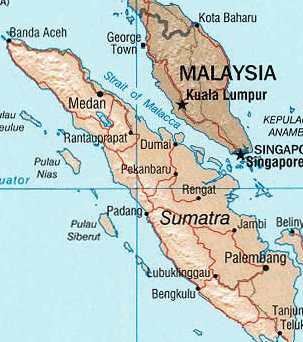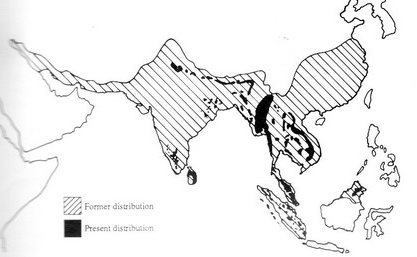Elephas maximus
Habitat & Geography
Subspecies
There are four subspecies of the Asian Elephant and all are endangered species:
- Indian Elephant (Elephas maximus indicus)
They are found in India, China, Burma, Thailand, Cambodia, and the Malaysia Peninsula.Most males of this subspecies have tusks but most females do not.
- Sri Lankan Elephant Elephas maximus maximus)
They are found in Sri Lanka and it is rare to find even males with tusks.
- Sumatran Elephant Elephas maximus sumatransis)
They are found on the island of Sumatra and are the second smallest subspecies.
- Borneo Elephant(Elephas maximus borneensis)
They are also known as the Borneo Pygmy Elephant and are found in north Borneo. They are the smallest subspecies.
Habitat
Asian elephants can inhabit a variety of habitats including tropical forests, grasslands, and farm areas. They can adapt to very dry conditions as well as very moist enabling them to occupy moist, evergreen lowland forests to cooler mountain forests.
They generally inhabit large blocks of forest near water bodies and grasslands so that water is easy accessible. However, due to habitat loss and human conflicts, most elephants prefer to live in remote areas so that they have plenty of room to explore vegetation without human encounters.
To find out information about the habitat of the African elephant, the Asian elephants' cousin click here: http://bioweb.uwlax.edu/bio203/s2007/shah_rach/
A Few Asian Elephant Neighbors
Geography and Distribution
The total number of Asian elephants has dramatically decreased over the years and their geographical range has also shrunk greatly due to a variety of reasons including habitat loss, and the demand for ivory. These populations have been reduced to scattered areas in India, Sri Lanka, Southeast Asia, and a few islands including Sumatra, Borneo, and Indonesia.
In 1989, Asian elephants were added to the international list of the most endangered species at which point there were only about 600,000 remaining, which is less than 1% of the original number.




